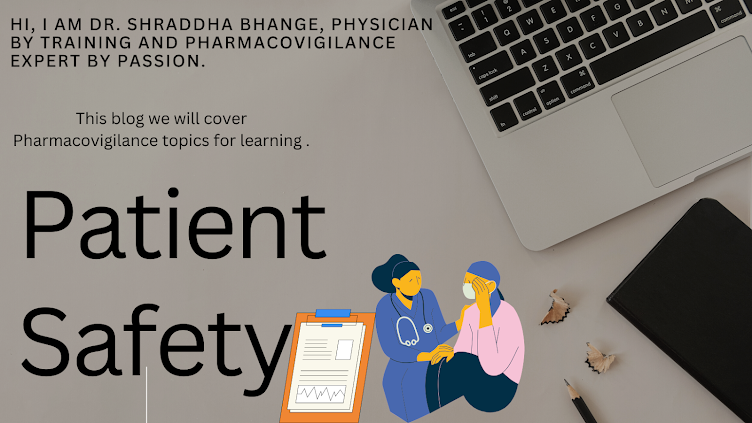What skills are essential in PV other than PV?
1. What is PV?
Pharmacovigilance is the science and activities relating to detecting, assessing, understanding, and preventing adverse effects or any other medicine/vaccine-related problem.
2. Scientific skills vs supporting skills
1. Regulatory guidance: Scientific skills like GVP modules, CIOMS, and ICH -GCP guidance documents should be clearly known at a high level, to say the least. However, these are very detailed, so memorizing them is not an expectation; knowing how to interpret them in daily PV activities is.
2. ICSR: ICSR is not limiting the knowledge to only 4 minimum criteria and how to do case processing. ICSRs also need to understand the criticality of each ICSR in the product safety file. For Seriously unlisted cases, especially any ICSR that can potentially be a signal, a critical assessment of labeling, seriousness, and causality is the first step. But going beyond this is essential as well. Product quality complaints, off-label use, and increased complaints related to product packaging issues also impact patient safety. For e.g., a lot of ICSRs with patients unable to open packaging issues for an asthmatic drug is a potentially severe issue, as this may cause asthma patients to not get the correct dose at the right time during an asthma attack.
3. Aggregate reports: The starting point is PSUR, PBRER, and DSUR basics from regulatory guidance documents for the template and expectations understanding. However, for a PV professional to author, review, or contribute to PSUR requires many analytical skills. We need to know what the baseline safety profile of the product is, how to correlate sales volume data against the number of adverse drug reactions reported, have a clear strategy regarding which risk will need cumulative vs interval analysis, what articles to include, and how and which topics can be closed are some key answers to find for each aggregate report to then conclude if there is any change in the benefit-risk profile of the drug.
4. Signal detection: As much as every new PV professional wants to jump into signal management, knowing the signal management process through regulatory guidance is just the beginning. Identifying, validating, and proposing a signal outcome requires a thorough understanding of medical, scientific, and drug safety profiles.
5. Risk management plan (RMP) and risk management measures:
RMP is a big topic in PV, where all the pieces of PV come together for patient safety. Identification of risk, proposing appropriate risk minimization measures, and evaluating those measures that are sufficient and effective for patient safety is a collective effort of everyone working in PV and also other departments. Every MAH has to ensure a favorable benefit-risk profile for each drug. To ensure this, it is essential to know how to scientifically put the risks associated with the drug with appropriate risk minimization measures to get MA approval or to continue the MA approval.
6. Other: Some country-specific or local requirements are also necessary, primarily if you work on a product marketed in these territories. Health Hazard Evaluation Report, PLLR, REMS, PSMF. As PV works very closely with regulations, it is essential to know the regulatory requirements like MA application, CTD modules, MA dossier qualification, and post-submission expectations from the regulatory authorities. You are submitting NDA, ANDA, or for a new indication of a previously approved drug.
3. Supporting skills that are a must
Having only scientific skills is necessary, but complementary skills that will help you implement your assigned tasks effectively and productively are also essential.
In the world of PV, activities can most often not be planned as they depend on external factors—how many AEs are reported and when, what and when regulatory agencies send questionnaires, etc.
Hence, time management and prioritization are a must. PV also needs to collaborate with every department in a company (RA, Clinical) and an outside company (RA). Stakeholder management, influencing, negotiation, and good communication skills help a lot when implementing any PV process and ensuring its effectiveness.
Other skills valuable in any other career, such as Presentation, leadership, and knowledge of Excel and Word, are also essential in PV.
4. Supporting skills based on role and KPI :
Some skills are more critical than others for some roles within PV.
ICSR: Excel, safety database, time management, coding.
Aggregate: Stakeholder management, Excel, analytical skills, literature review
Signal: Looking at multiple datasets for meaningful patterns and trends. Signal database, RA database combing and downloading, statistics and epidemiology
RMP and REMS: Knowing HCP patterns and behaviors to understand which RMM and aRMM will be effective, visualizing, project management, influencing, negotiation, and assertiveness.
5. Where to find tools to develop?
Coursera, UDEMY, and YouTube are probably PV academy training institutes for online and offline tools.
6. How to ensure continuous development of supportive skills
The most significant source of learning is doing by learning. If you are in ICSR and want to develop aggregate skills, ask to contribute a few sections and listings in PBRER. Ensure that you stay up to date with regulatory guidance, but before that, ensure you are thorough with internal company SOP on the area of development you are focusing on.
Written by:
Dr.Shraddha Bhange.
Connect with me Via the comments below. (I do not respond to Facebook messages)
Support the cause of better rural education with me: ThinkSharp Foundation http://thinksharpfoundation.org/#home.
Reference:

